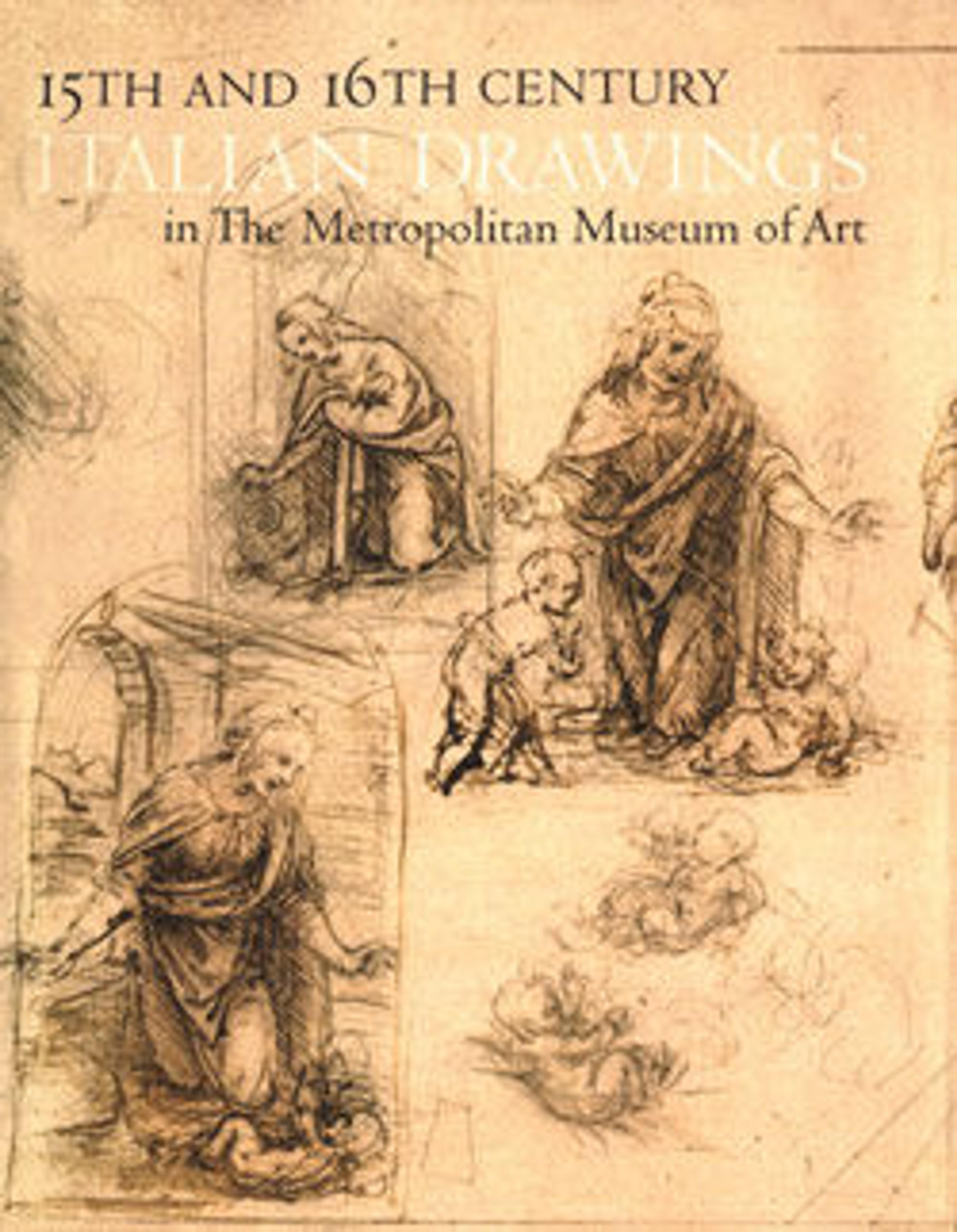Seated Goddess Diana (recto); Studies of a Nude Male Torso Seen from the Rear, and a leg (verso)
The softly rendered drawing on the recto of this early sheet was clearly inspired by Correggio's Diana, frescoed around 1518-19 above the fireplace in the Camera di San Paolo in Parma. The drawing technique is palpably Correggesque, with reinforced contours full of movement and a sfumato effect of tone despite the use of hatching. The present study has been described as a "copy from memory" after Correggio, but it reveals such fundamental differences of conception with respect to Correggio's fresco (the goddess exhibits more compact bodily proportions, and is seated in a languid, entirely restful pose) that it seems an independent work. It may well be that the challenge of designing a Diana fresco cycle of his own in the small room at the Rocca Sanvitale in Fontanellato stimulated Parmigianino in this iconographic exercise. The proportions of the torso on the verso of the sheet seem closer to the hefty anatomy of some of the putti in Correggio's camera di San Paolo oculi frescoes, or of his semi-nude apostles in the dome frescoes at San Giovanni Evangelista than to the original of the famous Belvedere Torso, as has been suggested. (This Hellenistic marble sculpture now in the Vatican Museums was at the Palazzo Colonna in Rome in the early sixteenth century.) Rather the artist probably drew the torso after a wax model, a practice also used by Correggio to design the San Giovanni Evangelista frescoes. Parmigianino's studies of two putti in the Louvere (Popham no.405, pl.15) of ca.1522 offer an exact analogy to the present sheet in terms of technique and practice. The recto was most probably produced soon after Correggio completed the Camera di San Paolo frescoes. The style and technique of the drawing suggest that it dates from around 1522, reflecting the moment when Parmigianino and Correggio were both working in San Giovanni evangelista.
(Carmen C. Bambach 2000)
(Carmen C. Bambach 2000)
Artwork Details
- Title:Seated Goddess Diana (recto); Studies of a Nude Male Torso Seen from the Rear, and a leg (verso)
- Artist:Parmigianino (Girolamo Francesco Maria Mazzola) (Italian, Parma 1503–1540 Casalmaggiore)
- Date:ca. 1522
- Medium:Red chalk
- Dimensions:5 3/4 x 3 7/16in. (14.6 x 8.7cm)
- Classification:Drawings
- Credit Line:Rogers Fund, 1910
- Object Number:10.45.4
- Curatorial Department: Drawings and Prints
More Artwork
Research Resources
The Met provides unparalleled resources for research and welcomes an international community of students and scholars. The Met's Open Access API is where creators and researchers can connect to the The Met collection. Open Access data and public domain images are available for unrestricted commercial and noncommercial use without permission or fee.
To request images under copyright and other restrictions, please use this Image Request form.
Feedback
We continue to research and examine historical and cultural context for objects in The Met collection. If you have comments or questions about this object record, please contact us using the form below. The Museum looks forward to receiving your comments.
